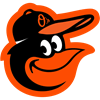With the 2014 portion of the season upon us, fantasy golf owners will soon be drafting teams for the new season. And while different leagues have different rules that can make one player attractive in one league and not at all in another, there are some simple stats-based dos and don'ts that can help make your team the best it can possibly be.
Draft the Most Well-Rounded Players
Frequent readers of my stats columns know I love looking at the all-around category because it basically speaks for itself - who has the best complete game - so we thought we'd look at the ranking after the six fall events and answer this simple question: do the stats tell the truth or lie?
With the disclaimer that not all players had the benefit of every category incorporated into the all-around ranking possible to help their cause (as three events didn't have full ShotLink services), here's how the top five in the category fared this fall:
1. Will MacKenzie, - one top-10, two other top-25 finishes
2. Hideki Matsuyama - T3-T25-withdraw in three starts
3. Webb Simpson - victory in Las Vegas, one other top-10
4. Kevin Stadler - finished in the top-30 in all four events he played
5. Brendon Todd - two top-25 finishes in four events played
So what does this tell us? And does this stat correlate to on-the-course success?
Well, while only one got into the winner's circle, all five had solid stretches and would have given
With the 2014 portion of the season upon us, fantasy golf owners will soon be drafting teams for the new season. And while different leagues have different rules that can make one player attractive in one league and not at all in another, there are some simple stats-based dos and don'ts that can help make your team the best it can possibly be.
Draft the Most Well-Rounded Players
Frequent readers of my stats columns know I love looking at the all-around category because it basically speaks for itself - who has the best complete game - so we thought we'd look at the ranking after the six fall events and answer this simple question: do the stats tell the truth or lie?
With the disclaimer that not all players had the benefit of every category incorporated into the all-around ranking possible to help their cause (as three events didn't have full ShotLink services), here's how the top five in the category fared this fall:
1. Will MacKenzie, - one top-10, two other top-25 finishes
2. Hideki Matsuyama - T3-T25-withdraw in three starts
3. Webb Simpson - victory in Las Vegas, one other top-10
4. Kevin Stadler - finished in the top-30 in all four events he played
5. Brendon Todd - two top-25 finishes in four events played
So what does this tell us? And does this stat correlate to on-the-course success?
Well, while only one got into the winner's circle, all five had solid stretches and would have given solid fantasy points if they were on your team.
Draft Good Putters, But Buyer Beware
The strokes gained-putting stat, which is exactly what it sounds like, is the best putting statistic out there. Furthermore, because most PGA Tour courses are exactly the same, and the rough isn't an issue, putting becomes paramount to determine winners and losers.
However, make sure you draft good putters with good well-rounded games. Take the top six of this year's strokes gained-putting statistic for example:
1. Greg Chalmers
2. Steve Stricker
3. Stephen Ames
4. Brandt Snedeker
5. Aaron Baddeley
6. Phil Mickelson
Tiger Woods was 22nd, in case anyone was wondering.
Chalmers had two top-10 finishes in 2013 and made a little more than $630K, Ames had zero top-10s and just one top-25 and Baddeley had just two top-10s and 14 weekends out of the money. You don't want to pick those guys.
However, take the other three on that list: Stricker, on a limited schedule, had four second-place finishes and eight top-10s. Snedeker was the hottest golfer in the world for the early part of 2013, winning twice on the season and having two second-place finishes to boot. And Mickelson, of course, had one of the best seasons of anyone on the planet, winning three times around the world, including the Open Championship to cap it all off it.
So draft good putters, but make sure the rest of their games are in pretty good shape, too.
Scrambling & Proximity From Where You Don't Want to Be
While every event seemingly ends with a champion at 16-under par, there are times where scrambling and hitting it close from the rough can be a big benefit.
The top five on the scrambling stat - Bob Estes, Stricker, Chris Kirk, Stuart Appleby and Charles Howell III - may not seem like the most honored group of golfers in the history of the game, but there are some very consistent players in the bunch. First, consider Kirk, who had a second and two other top-10s in 2013 and then promptly kept the good vibes going by winning the final event of the fall, the OHL Classic at Mayakoba.
Howell, meanwhile, had a second, third and three other top-10s in 2013. So far for the 2014 season, he has three top-10s in five events played.
Proximity to the hole from the rough - which is exactly what it sounds like, too - was led by Jordan Spieth in 2013. I think we all know what kind of a season he had.
He's followed by Rickie Fowler, who has all the talent in the world but somehow still has just one win, and joined further down in the top 10 by Stadler and Mickelson.
Other Tips
At the PGA Tour's website, you'll see something called "Points/Rankings" on the stats page. Click that, you'll get access to essentially a list of "What Have You Done for Me Lately" rankings for various statistical categories (they're officially called "Last Five Events"). Watch those, as they are a strong indication of who's hot, and who's not.
Remember for drafting purposes, there's a six-week break between the last event of the fall and the Hyundai Tournament of Champions in January.
Realize the perennial "major risers" don't have those week's stats listed in many of these important categories. The four majors don't use ShotLink, and, thus, golfers like Justin Rose or Jason Day, who always seem to play well no matter how else they're playing during the season, won't have those performances reflected in ShotLink-specific rankings like strokes gained-putting or proximity to the hole.
Look for golfers who start fast ... or start slow. As you draft or start players, look at their recent schedules, and then go back through the years. Spieth talked recently about how he seems to play well on the third or fourth straight week that he plays. Conversely, Woods likes to play sparingly, preferring to practice rather than play.
Notice a player's tendencies, see how they perform in stretches they play often, and draft (and start) accordingly.




































